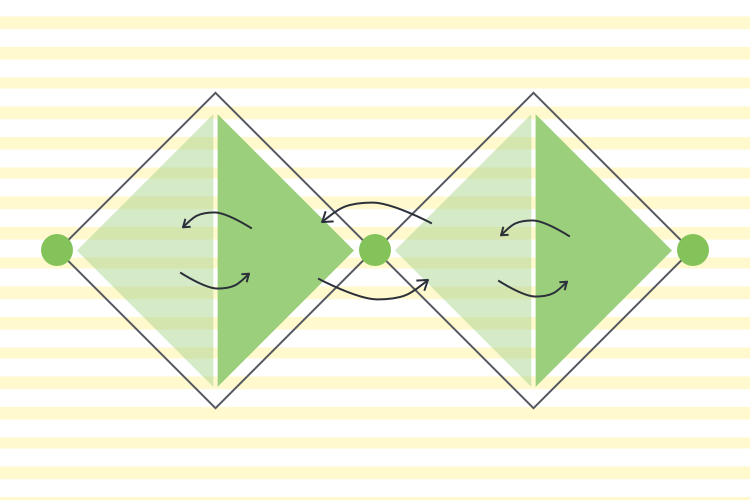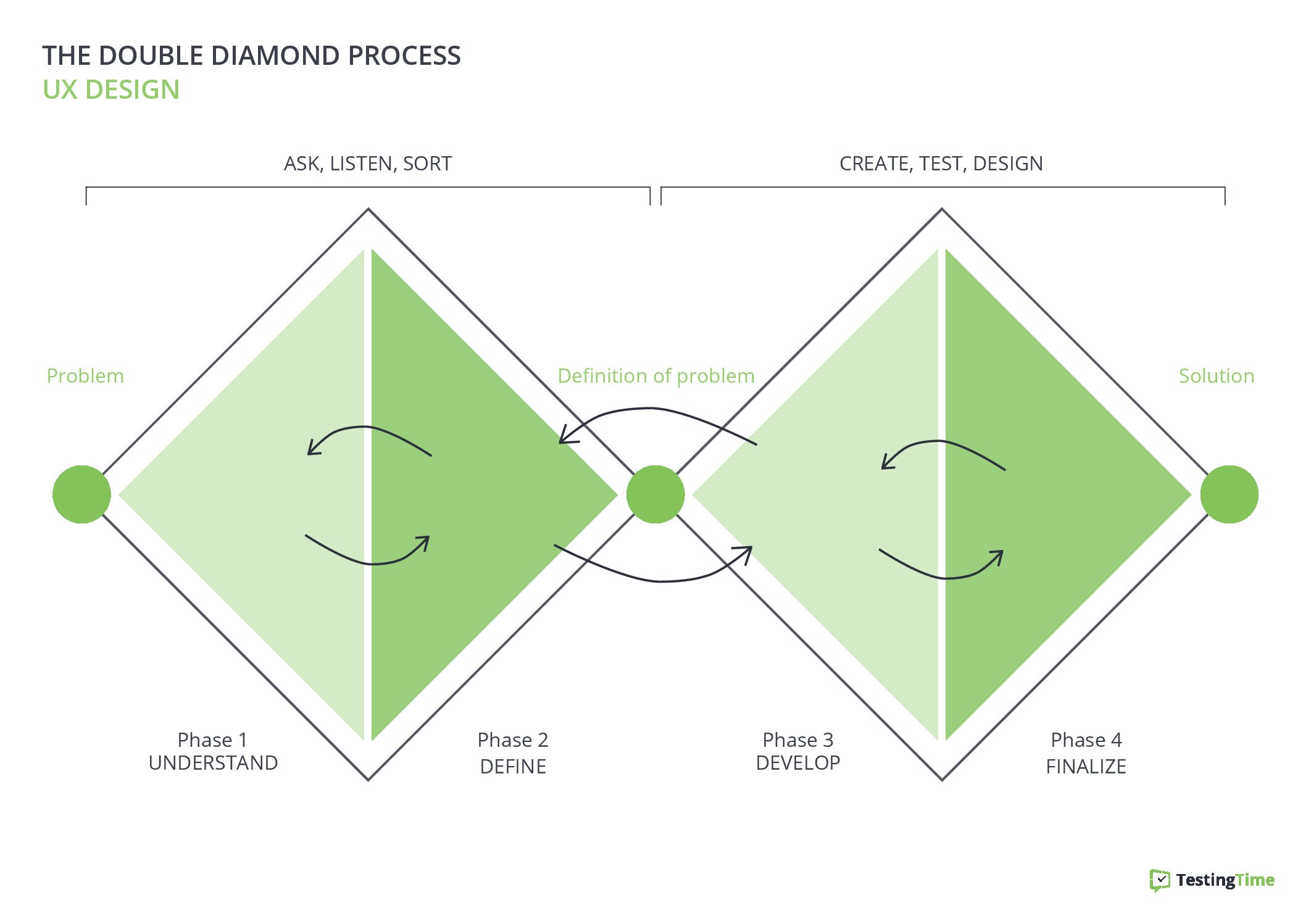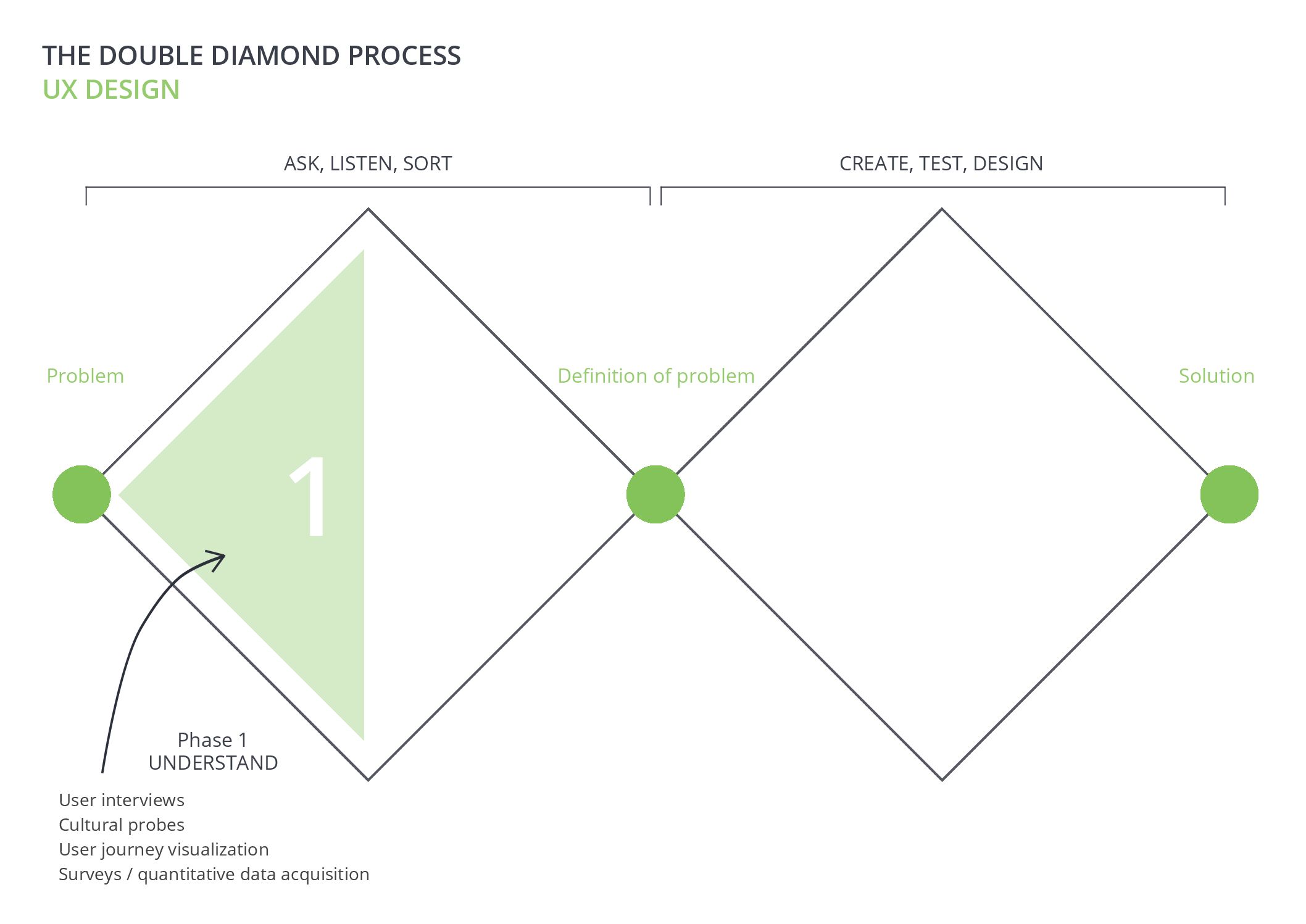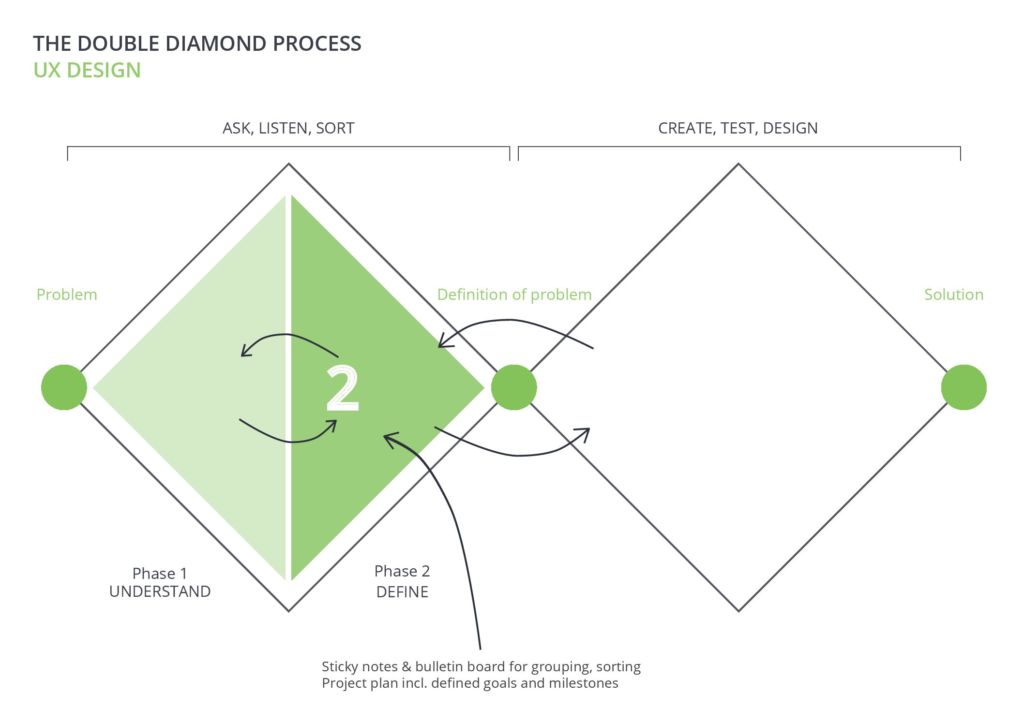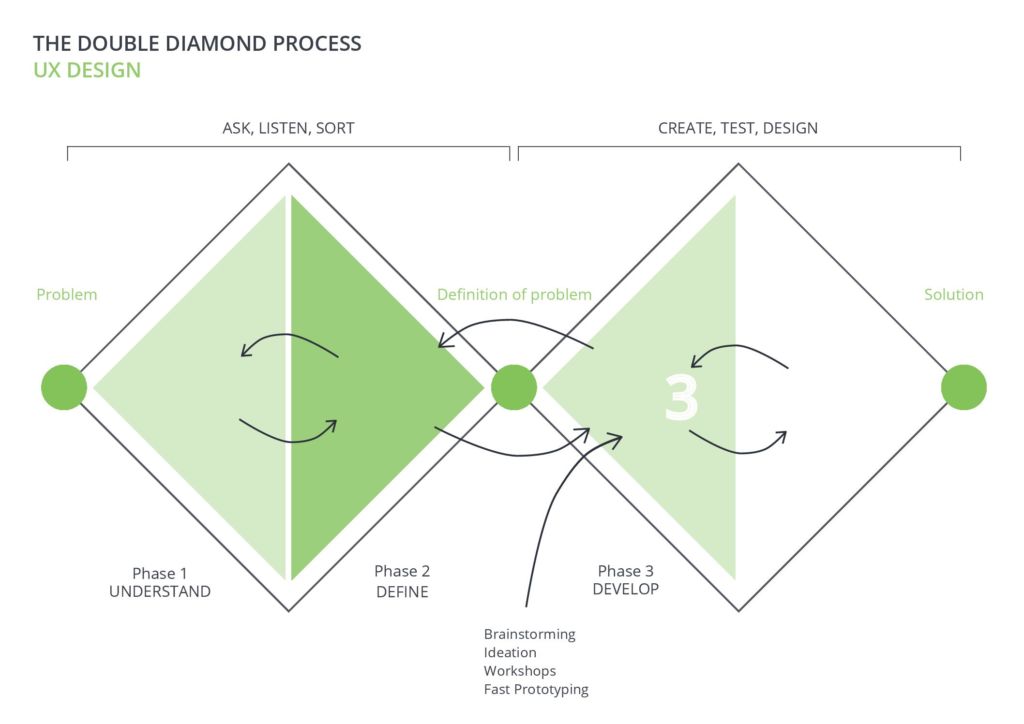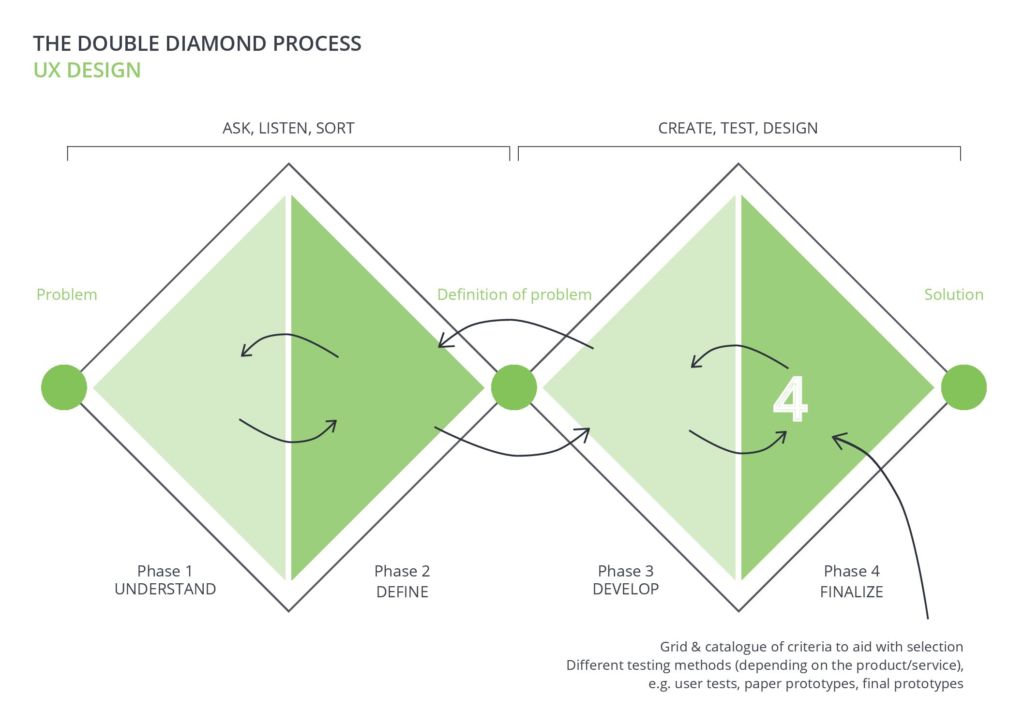It’s dark, a ray of light is shining through a gap in the door, and you have no idea that you are only a few inches away from an extremely painful experience. All you wanted was to kiss your daughter good night. You have long forgotten the afternoon spent building castles with Maxi, the child from next door. Then all of a sudden the inevitable happens: You tread on one of those small, colourful LEGO bricks and nearly faint from the pain.
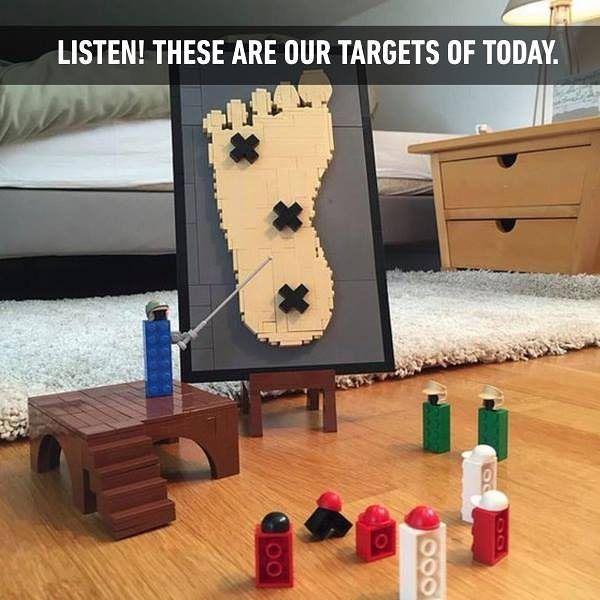
Lego conspiracy – Source: 9gag
If only the Danish toy manufacturer had used the Double Diamond process in 1949, the blocks might have been made of soft rubber, repelling feet magnetically, or even sweeping themselves out of the way entirely. While this LEGO example isn’t meant entirely seriously, it illustrates something that happens in countless companies every day. Except that it tends to happen much less noticeably, loudly and colourfully.
In other words, products are often developed that work ideally for certain target groups (playing children), while at the same time completely ignoring other users (parents in pain). Often, this happens unintentionally and is due to a lack of time for the project. This is where the Double Diamond process can come in handy. We will start off with an introduction explaining the Double Diamond process and the story behind it. In the second part of this article, we will explain the four process phases and their applications in more detail.
What is the Double Diamond process and how can it help you in everyday life?
The Double Diamond is a visualisation of a creative process, or a design sprint, and allows any UX designer to understand and respond to the users’ needs. The process helps teams work together towards a common goal and can be used effectively as a means of communication in meetings, such as when you need to inform your supervisor about the current status of the UX process, or when you want to show a UX stranger where and how user knowledge is being used in your organisation. The Double Diamond process was developed by the British Design Council in 2005. As the British government’s official design advisor, the charity is actively involved in the country’s future development and conceptualises solutions addressing social, environmental and economic issues. The Double Diamond process was developed internally to unite and visualise creative processes from a wide variety of fields.
The four phases of the Double Diamond process
The Double Diamond process consists of two diamond-shaped areas and is divided into four phases. The first diamond consists of two phases and is dedicated to gathering information and user research, i.e. asking, listening and sorting. The second diamond consists of two phases that are dedicated to information processing and the iterative design process. Creating, testing and designing are the main tasks here.
Ideally, the process starts with a trigger (such as a new project or design sprint), moves into the second diamond with a clearly defined problem, and ends with a finished design solution at the end of the second diamond. As you may already have guessed, this is often less linear in real working environments. It is often necessary to switch back and forth between phases and repeat certain steps if the desired results have not yet been achieved. The following sections discuss and examine all four phases in detail:
- Phase one: Understanding the problem
- Phase two: Defining the problem
- Phase three: Developing possible solutions
- Phase four: Choosing and developing the solution
The solution (i.e. the final result) does not necessarily have to be a response to the original trigger, because in the course of the design process new sources of problems are often found through continuous user feedback. In these cases, an alternative definition of the problem would be determined at the beginning of the second diamond. It is not a strictly linear process. Although it is possible to work straight through from start to finish, it is often necessary to switch back and forth between phases and repeat a step if the desired results have not yet been achieved.
Phase one: Understanding the problem – User research
As mentioned above, each new design project starts with a trigger. This can take a number of different forms. These can include user-reported usability problems, new product ideas, or the improvement of an existing product. Any of these might be a possible starting point. The first phase is usually dedicated to user research, market research and, consequently, understanding the problem you want to solve. During this process, you collect as much information as possible on the topic and talk to all potential target groups. For example, you might want to find out why an assumed customer group does not use your own product or why a target group that is not directly addressed is showing a lot of interest.
In this phase, the focus is on the user. We aim to understand their preferences, motivations and problems in the best possible way. There are a number of well-established user research methods that can be used for this purpose. Combine multiple user research methods to confirm your hypotheses and get the best results.
Common first-phase user research methods:
- User interviews
- Contextual inquiries
- User journey visualisations
- Online surveys
Common pitfalls
Biased research – One of the challenges in the first phase is to eliminate existing assumptions about core problems and solution ideas and to start the research completely unbiased. You may have been working on the problem for months and want to find a solution as quickly as possible. However, this is the wrong mindset for the first phase of user research. At this point, it is about questioning everything. It is about reaching out as far as possible in all directions and also exploring areas that at first glance do not appear to be obviously relevant.
Too much research – Obtaining user feedback is important. But beware, you can quickly end up getting lost here. Collecting excessive amounts of data can make you become virtually addicted to more information, with no end in sight. It is impossible to grasp everything. There will always be questions that you could explore in more detail, and there will always be experts who come up with yet more well-intentioned advice and hypotheses. This is why it helps to set a fixed deadline for you to complete your research before moving on to the next phase. As mentioned earlier, the Double Diamond process is not necessarily linear. Whichever way you proceed, there will be opportunities for you to research again in the next phase. However, it is helpful to define from the beginning when which phase should start and when it should be completed.
Phase two: Defining the core problem
Data collection is followed by the phase where we sort our feedback, identify common patterns, and create initial hypotheses that define the problem. You will find that the collected feedback will reveal many more problems than those you defined at the start. It’s crucial to question whether the original problem is still relevant or whether any other issues you uncover have more potential to improve the user experience.
In the second phase, the most helpful research methods are those that can be used to narrow down the problem and define goals which help tackle the problem.
Commonly used methods in this phase
- Pinboards with post-its allow you to show, move and iterate patterns and groupings.
- Project plan including defined goals and milestones
Common pitfalls
Prioritising is essential – In the first phase, it was important to be as open as possible. This phase requires the exact opposite: Now you have to be as pragmatic as possible. It’s dangerous to try to pack multiple problems into one definition and create a one-size-fits-all solution. Focus and clarity are the most important goals when nearing the end of this phase. A clear definition of the problem will help you narrow down your approach in the next phase. A poorly defined problem that tries to solve everything all at once will inevitably lead to an unclear starting point and to an unsatisfactory, wishy-washy solution. All areas that you’re not able to cover in the process this time around, you can of course use as starting points for future projects. This ensures they are not lost. So be disciplined and concentrate on the most promising problem you have identified.
Phase three: Developing possible solutions
Once you have arrived at a clearly defined problem, you are ready to begin the search for possible solutions. At first, it will be a question of quantity over quality. Brainstorming, ideation and workshops with your team (or even with users) will help generate a variety of ideas that may serve as potential solutions.
When you have identified three to four solid solutions for your users’ problem, it’s time to put your ideas to a quick test. Develop easy low-fidelity prototypes or mock-ups and show your target group the three to four options that you have developed. The aim is to get relevant feedback as quickly as possible. Which prototype best gets to the heart of your users’ problem and solves it? In what areas are users still experiencing uncertainties or a lack of clarity? Guerilla testing and remote user testing are two methods that can help you find this out.
Commonly used methods in this phase
- Brainstorming
- Ideation
- Workshops
- Rapid Prototyping
- LoFi Mockups
- Guerilla Testing
Common pitfalls
Narrowing down the solution too quickly – After minimising the flood of data in the first part, it is tempting to jump straight to a solution. However, it is important that you once again allow yourself some creative freedom. Consider many ideas and don’t be afraid to think outside of the box. Brainstorming and ideation skills improve the more you practise. It is important not to judge too soon, or to reject any ideas too quickly, since you risk discarding possible solutions before they have had a chance to develop. Don’t hesitate to remind others, too, when you’re working and brainstorming in teams. Sentences such as ‘that will never be possible’, ‘that isn’t technically feasible’ or ‘that costs far too much money’ are toxic in this phase. No matter how exaggerated or seemingly impossible a suggested solution is, it may be inspiring or lead to other ideas.
Navel-gazing – Another obstacle to watch out for is navel-gazing, which frequently happens within teams and companies. If there is something that ‘has always been done this way’ or ‘was never possible’, then that can restrict the thinking process. This is where fresh ideas from outside may be of help. These don’t necessarily always need to come from experts or creatives. People from outside the industry have a completely different way of thinking and therefore also bring interesting approaches into play. Future users of the product can also provide valuable input and can help generate new ideas.
Phase four: Selection and development of the final solution
Phase four represents the last step in the process and therefore should produce a concrete solution. After narrowing down your solutions to three to four favourites in the previous phase, it is now time to evaluate the feedback from your rapid user tests and to correlate it with a list of criteria. It is absolutely fine to iterate again at this point, e.g. with another round of brainstorming, in order to develop more concrete solutions.
If one or two promising solutions emerge, begin developing your prototypes to a higher level of detail. Depending on the product or service, you can then evaluate these hi-fi (clickable) prototypes with suitable UX testing methods. For example, moderated remote or in-house user tests can be particularly useful. Here, again, it is important to not start the tests with a bias. Listen to your test users. Are there still confusing functions or user journeys? Do the users understand the benefit of the presented solution? It is better to recognise and fix such uncertainties in this phase than during the development process or even after the product launch.
Commonly used methods in this phase:
- Grids and lists of criteria can help with the selection process
- High-fidelity prototypes, clickable prototypes
- Various testing methods (depending on the product/service, e.g. moderated user tests
Common pitfalls
‘Kill your darling’ – you may have already fallen in love with an idea in the development phase. Often, this will be an idea which would personally bring you the most pleasure. This might be because it would be particularly exciting to implement or because it’s particularly innovative. But beware, this will quickly make you less open to user feedback, which needs to be considered in this phase. No matter how innovative a product is, the entire development will be for nothing if the user doesn’t understand it. This is why it’s important to remain rational and objective. It may help you to evaluate feedback from the users in your team. That way, you don’t run the risk of unconsciously highlighting opinions that you may like but which aren’t relevant.
Conclusion: User-centred thinking and acting require a consistent process.
The Double Diamond process is the ideal guide to design processes in every team. Additionally, the visualisation of the process helps everybody in the team to understand what stage they are currently at and what steps are still to come. The process helps to define a clear roadmap and incorporate user feedback right from the beginning. The Double Diamond also serves as a visual tool when communicating with stakeholders in meetings.
The four phases again at a glance:
- Phase one: Understanding the problem
- Phase two: Defining the core problem
- Phase three: Developing possible solutions
- Phase four: Choosing and developing the solution
The process allows for a lot of flexibility and potential, but keep in mind: Practice makes perfect. Give your team and yourself time to absorb the user-centred process. You will see that you naturally become more confident in your product development decision-making abilities, because they are no longer based on assumptions but, rather, on carefully collected and evaluated feedback from those who will eventually use the product. As a matter of fact, there are actually design changes under way at LEGO. For example, they have specifically developed the Serious Play methodology for visualising the user experience. Perhaps soon there will be new and pain-free Lego bricks available to buy. I look forward to hearing any feedback, questions or suggestions. How does the design or UX process work in your team? What are your best practices?
If you are looking to deepen your knowledge: Dan Nessler has written a very interesting post on the subject: How to rethink the Design process, fail, reflect and iterate.
